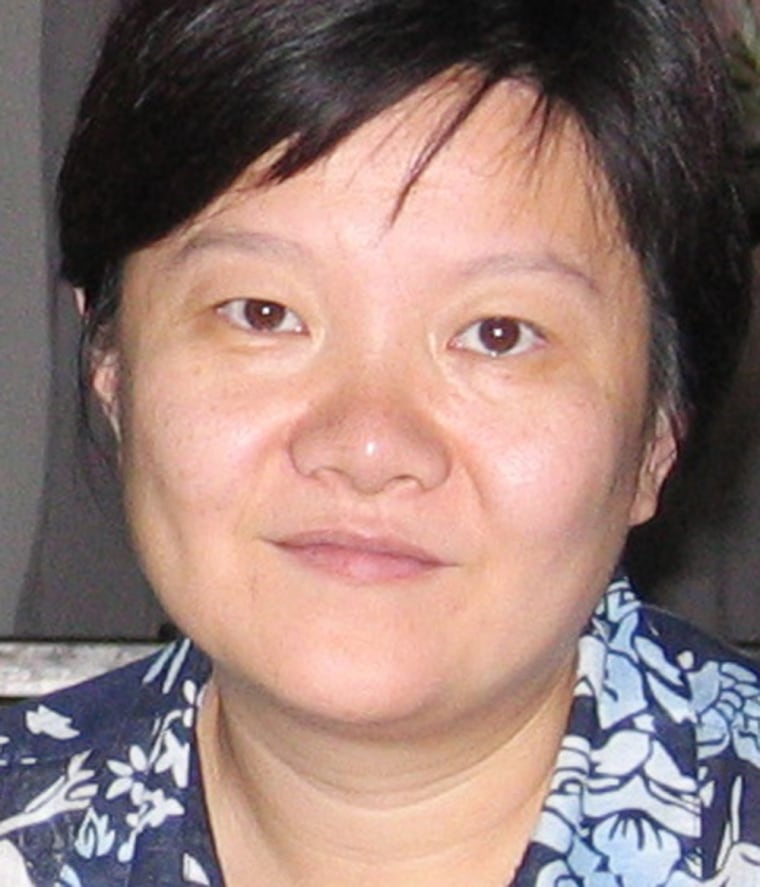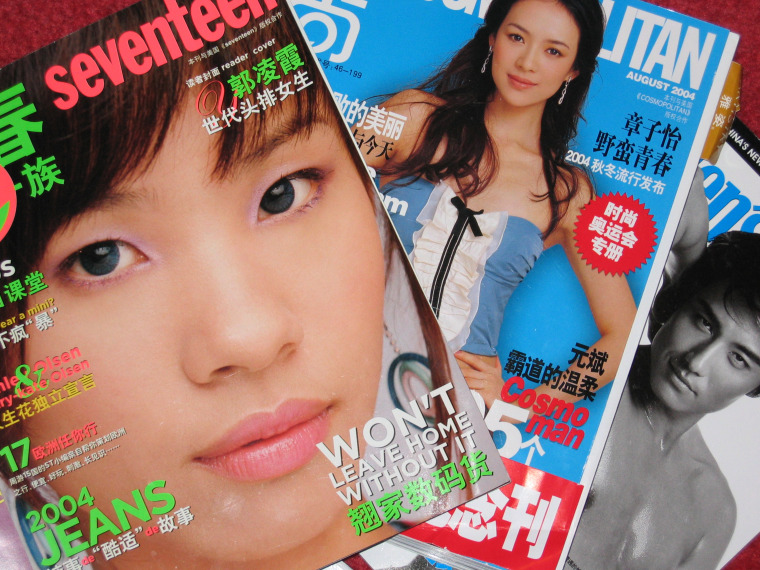Aside from the color scheme, Hung Huang’s junior high experience had little in common with her homeland.
At age 12, Hung was sent to Greenwich Village’s Little Red Schoolhouse while Red China suffered through the throes of the Cultural Revolution.
She returned to China during the power struggle that followed the death of Mao Zedong, whose English teacher, coincidentally, was Hung’s mother.
Now, 30 years after her days as a “New York street kid,” she is educating China on Western cultural goods.
Hung, a Vassar graduate and co-host of a new Beijing radio show, is the CEO of China Interactive Media Group (CIMG).
CIMG publishes iLook, a Mandarin luxury goods magazine with a Beijing readership of 55,000 and an imminent Shanghai launch of 50,000; Time Out Beijing, a Chinese version of London’s premier listings magazine with a subscriber base of 30,000 and a budding English-language section; and Seventeen, or Qingnian Yizu, the Mandarin version of every American mother’s favorite “squeaky-clean” teenybopper magazine.
Hung said that when she began with iLook in 1998, she knew nothing about publishing, having stumbled into the industry upon the encouragement of a friend and with the expectation that China would liberalize the publishing industry in the ensuing decade.
Liberalization of publishing industry
Her dip into the Chinese publishing industry was well timed. Over the last few years, China has indeed been liberalizing the publishing industry’s financial -- and editorial -- constraints.
This month the State Administration of Press and Publications announced that overseas investors will be allowed to form book, newspaper, and periodical wholesale and retail firms by the end of 2004, in line with pledges China made upon entry to the World Trade Organization in 2001.
At the moment, investors must hook up with a state-owned entity that has a government-issued publishing license, but Hung said there are many magazine companies in China looking for foreign partners as the government eases restrictions.
Last year, the government approved $469 million of foreign investment into 84 Chinese printing enterprises, according to Xinhua News Agency.
China’s Seventeen Editor-in-Chief Tiina Wang said that government censors have been less demanding as well.
“Two years ago, we never had less than three problems [with the censors] each issue. This year we have had very few problems.”

Yet, the Chinese government always has the final say on editorial content, typically demanding adjustments to politically sensitive or salacious material, though Hung said state censors are usually reasonable.
Her magazines’ staff and censors, who often participate in focus groups, work in a “collaborative editorial effort.”
“If you include [the censors] in your work process, they’re not always so suspicious that you’re trying to stir up trouble,” she said. “They understand where the original content comes from.”
On the other hand, Hung attributed the failure of CIMG’s Chinese version of Wired magazine to a belligerent censor who “wanted to be a writer and show her might as a censor, literally censoring every single word.”
This summer the Chinese government has launched a campaign to render more “wholesome” publications deemed “vulgar,” with a focus on dismantling pornographic websites.
Maxim, the largest men’s lifestyle magazine in America known for its scantily clad pin-ups, had planned to debut a Chinese mainland version last April, but has delayed the launch. Maxim representatives declined to answer questions about the delay.
Mandarin editions of other foreign magazines, such as Cosmopolitan or Hello!, are noticeably cleaner than their foreign originals, although frequent references to sex embellish newsstands’ glossy covers.
Meanwhile, the Chinese publishing industry has been expanding its media as well as its content. Several popular Chinese newspapers and even a Chinese novel are now available to cell phone subscribers.
Marketing to a generation of only children
Hung said some of the text of China’s Seventeen is taken from the previous month’s English-language copy, usually translated. Two columns, “Real Life” and “Trauma-Rama,” are reprinted in the original, albeit annotated, English.
After all, even high-level English classes in China are unlikely to cover the phrases “that’s gotta suck” or “skanky.”
“It’s important for teens here to know what teens in the States are interested in, or at least know that their pain is a global pain,” said Hung.
And Chinese teens have their own unique issues, explained Hung, one of them being that many are lonely.
With the One-Child Policy now two decades old, the generation that reads Seventeen is a generation of only children. Moreover, it is also a generation with successful, busy parents; accordingly, many top high schools now serve breakfast, lunch, and dinner on campus.
Loneliness coupled with exposure to Western media has bred yearnings for individuality and creativity, and Seventeen has adapted to that cultural environment.
The Chinese version of Seventeen is intensely reader-interactive.
College readers and photographers write and shoot what they see on their own campuses. The magazine also regularly holds model calls — especially convenient because “Chinese fashion photography is still way behind international fashion photography,” said Hung. The magazine also organizes events conceptualized by readers.
This year, for example, Seventeen is arranging a much-requested bash for Christmas, which Chinese youth treat as a nonreligious excuse for partying.
Lessons on how to tell a fake Fendi from the real deal
The content of CIMG’s flagship magazine, iLook, is also servicing a market brand-new to New China: women with disposable income.
Rather than teasing out the secrets of weight-loss or husband-nabbing, iLook educates its readers on the ins and outs of luxury goods. In a nation overflowing with fake Fendi and imitation Armani, genuine brand name goods are increasingly important to successful Chinese, Hung said.
“Luxury goods are the way Chinese women reward themselves,” she explained. “When they carry their Louis Vuitton bag and wear their Prada, they feel accomplished … part of what iLook does is tell the readers that fake is no good, for quality or for social status.”
In that spirit, any CIMG employee who carries a "fake" into work will be fired.
Although the male beauty market is growing -- there’s even a Mr. China beauty pageant scheduled for November -- there has always been cultural pressure on Chinese women to look good and dress right. Female artists and authors are informally categorized by their appearance.
“It doesn’t matter whether you’re smart,” said Hung. “You have a brain? Well good, use it on your clothes.”
Readers won’t find feminist criticisms of such a mentality in the pages of iLook, but they’re unlikely to be looking for social critique.
“Chinese women are not ready to have fashion and beauty mingle with social issues,” admitted Hung. “They’re just in different parts of their brains.”
In fact, Hung believes that Chinese women are enjoying the “full-blown image-craving, beauty-craving period,” since “this is the first time in 50 years that they can look beautiful without feeling guilty, and indulge themselves in material desires without being politically incorrect.”
Hung said that iLook provides a valuable service by providing a populace on a consumerist binge with reliable product information.
“We emphasize the creative and historical background of these brand names,” said Hung. “And as [Chinese consumers] get more sophisticated, they really buy into the stories behind the brands.”
Irksome copycat magazines
Imitation Kate Spade purses aren’t the only copycat luxury goods irking Hung these days.
In a nation that considers imitation the sincerest form of profitability, Hung complains about the lack of product differentiation in the nation’s 9,000 licensed magazines and a reluctance to create original content.
Titles hailed as unique in America homogenize when imported to China. Producers look to each other to decipher market demand, emphasizing precedent rather than novelty.
As a result, all the Mandarin men’s magazines look like GQ, and all the free English-language monthlies like That’s Beijing and Beijing This Month are virtually interchangeable to consumers and advertisers alike.
As competition and foreign investment grow, though, publishers will learn that brand loyalty and product identification are as vital to magazines as they are to pumps and wallets.
But Hung, grateful for her American education, thinks it will take time, as China’s prizing of plagiarism predates even Communism.
“Before 1949, we were reciting Confucius. After 1949, we were reciting Mao,” said Hung. “What do you expect when we’re taught that all we need to do to get ahead is regurgitate a dead guy’s quotes?”
